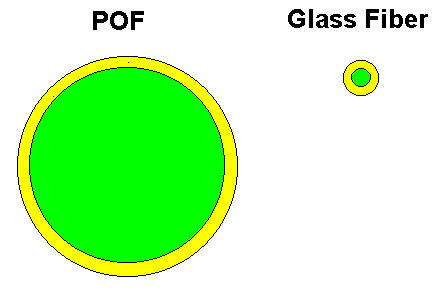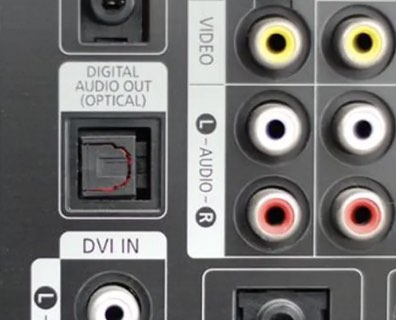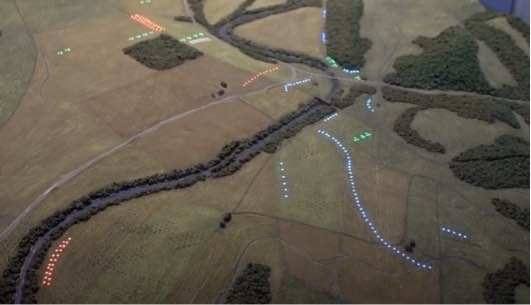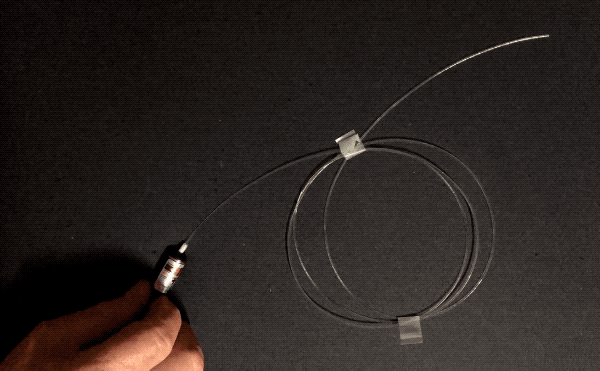Plastic Optical Fiber (POF)
Plastic optical fiber (POF) has always been "lurking in the background" in
fiber optics; a specialty fiber useful for illumination and low speed
short data links.

Most
POF is large core step-index multimode fiber with a typical diameter of 1
mm, mostly core with a thin cladding. This large core size makes it easy to couple light from LED sources and
connectors do not need to be high precision. As a result, typical
connector costs are 10-20% as much as for glass fibers and termination may
be as easy as cutting with a razor blade and no or minimal polishing.
Being plastic, its also rugged and easy to install without fear of damage.
From an optical standpoint, conventional POF is much lower in performance
than glass fiber - higher attenuation and lower bandwidth. It has a typical loss
of 0.15-0.2 dB per meter at 650 nm and its bandwidth is limited by its
large NA and step-index profile. However, it is adequate for running short
links, such as inside of instruments or within a room for desktop
connections up to 50 meters. And of course in automobiles, where it has
gained a foothold with the new MOST
and Flexray networks.
But recent developments in POF technology have led to low NA POF and graded index POF that
offer higher bandwidth and graded-index POF (GI-POF) that combines the
higher bandwidth of graded-index fiber with the low cost of POF. Current
designs of GI-POF offer up to 2 Ghz bandwidth at distances of 100 meters,
but manufacturing problems have hampered its adoption. Recent developments
in a new laser (VCSEL of vertical cavity surface emitting laser) promise
extremely low cost, high power, high speed transmitters.
POF's low cost, easy
termination (use a razor blade) and inexpensive transmitters and
receivers make it ideal for many consumer applications. If you have consumer audio equipment or a modern TV, it likely has a
digital optical port that uses POF. The fact that these links so widely
used indicates how inexpensive a POF link can be.

POF is popular as digital links in industrial machinery like robots
where distances are short and speeeds are low. Its flexibility is also
good for applications like robotic arms used in assembly.
POF is also used in automotive applications. MOST is a standard widely
used for high bandwidth automotive multimedia applications and Flexray
is used in critical timing applications like airbag deployment.
But the majority of applications for POF are for lighting. It can be used to
remotely illuminate objects that are sensitive to strong light or heat
from traditional light sources, making it popular for museum lighting of
small delicate objects. POF is also popular for lighting in areas that
are electrically dangerous like swimming pools. Another popular
application is creating starfield ceilings.

Another use is for signs or even animating an exhibit. The map below
depicts a battlefield with fiber illustrating the movements of the
troops.

The applications for POF have always been limited by its limited
bandwidth and distance capability. POF developers have tried to get
better bandwidth and distance capability for
data applications, even developing a graded index POF like multimode
graded index glass fiber, but have had limited success.
FOA likes using POF to demonstrate how optical fiber works. We provide
samples and directions for K-12 STEM teachers (STEM = science,
technology, electronics, mathematics) for classroom demos to teach
students about optical fiber.

POFTO - The Plastic Optical Fiber
Trade Organization - is a source of information on POF.
(c) 2023, The FOA
Return To The FOA Home
Page






